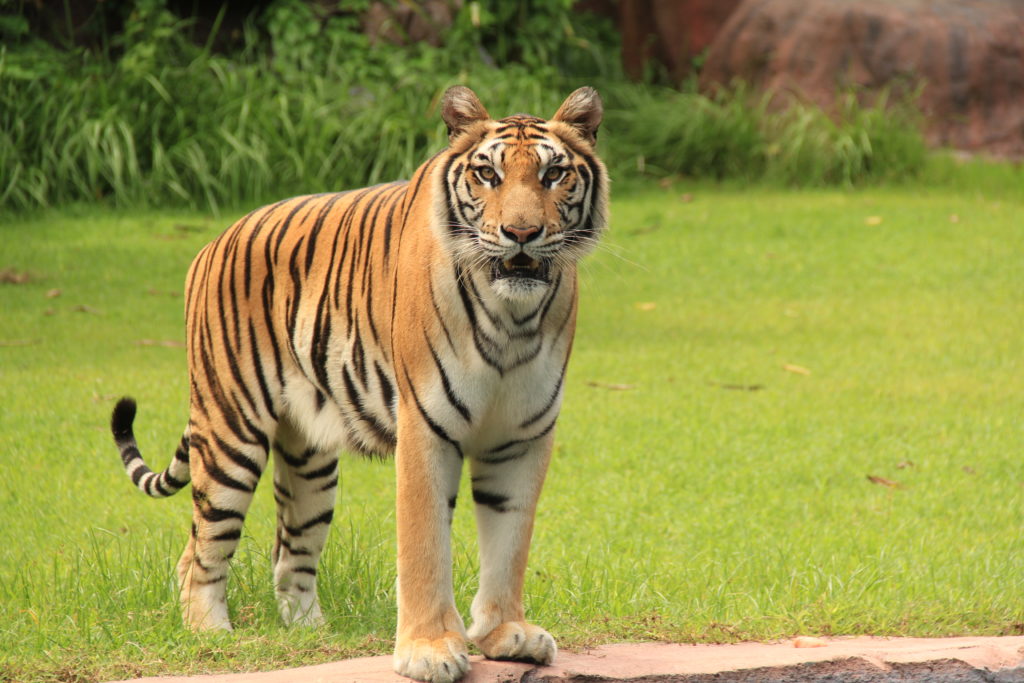Tigers are among the most iconic and powerful animals in the world, yet their populations have drastically declined over the years. Despite conservation efforts, tigers remain endangered due to various threats. Here are ten major reasons why tigers are at risk of extinction.
1. Habitat Loss

Tigers need vast forested areas to hunt, breed, and survive. However, deforestation caused by logging, agriculture, and urban expansion has destroyed much of their natural habitat. As forests disappear, tigers are forced into smaller areas, increasing competition for food and territory.
2. Poaching and Illegal Wildlife Trade

Tigers are heavily targeted by poachers who hunt them for their skins, bones, and body parts. These are sold on the black market, often used in traditional medicine and as luxury items. Poaching remains one of the greatest threats to tiger survival.
3. Human-Wildlife Conflict

As human populations expand into tiger habitats, encounters become more frequent. Tigers may attack livestock, leading farmers to kill them in retaliation. Without proper measures to prevent conflicts, tigers face constant threats from human activity.
4. Climate Change

Changing weather patterns and rising temperatures affect tiger habitats. Coastal regions like the Sundarbans, home to Bengal tigers, are being lost due to rising sea levels and flooding. Climate change also impacts prey availability, making survival more difficult.
5. Decline in Prey Species

Tigers depend on deer, wild boar, and other large prey for survival. However, overhunting and habitat destruction have led to a decline in these prey populations. With less food available, tigers are forced to roam into human settlements, increasing conflict.
6. Fragmentation of Populations

Tigers are now found in isolated patches of forest instead of large connected areas. This fragmentation reduces genetic diversity and leads to inbreeding, weakening the overall health of tiger populations and making them more vulnerable to diseases.
7. Weak Law Enforcement

Although there are laws protecting tigers, illegal hunting and wildlife trade continue due to weak enforcement and corruption. In many areas, poachers operate with little fear of punishment, making it difficult to stop the killing of tigers.
8. Demand for Tiger Parts in Traditional Medicine

Despite international bans, the use of tiger bones, teeth, and skins in traditional medicine continues in some cultures. This demand fuels poaching and black-market trade, pushing tigers closer to extinction.
9. Infrastructure Development

New roads, railways, and industrial projects cut through tiger habitats, making it harder for them to move freely. These developments also increase human presence in forests, leading to more conflicts and accidents involving tigers.
10. Lack of Awareness and Conservation Funding

Many people are unaware of the threats tigers face, and conservation projects often struggle to receive adequate funding. Without strong public support and financial backing, efforts to protect tigers and their habitats remain limited.
Conclusion
Tigers are at risk due to habitat destruction, poaching, climate change, and human conflict. Protecting these magnificent animals requires global efforts, stronger laws, habitat restoration, and better education about their importance. Without urgent action, tigers could disappear from the wild forever.

Alexander Smith is an accomplished blogger with years of experience in crafting engaging and insightful content. Known for his expertise and passion for storytelling, Alexander brings a unique perspective to Fascinate Names, captivating readers with his thoughtful analysis and fresh ideas. His extensive background in digital media and writing makes him a valuable voice in the blogging community.







